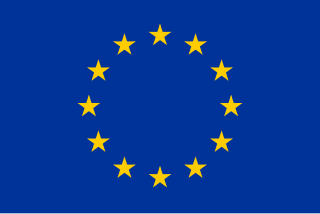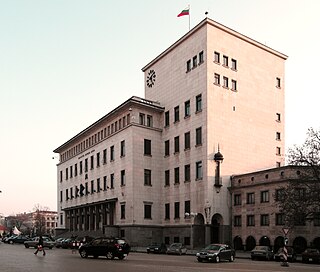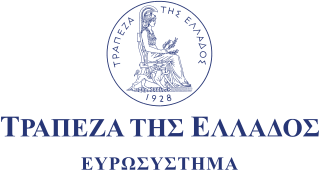 W
WThe European System of Central Banks (ESCB) consists of the European Central Bank (ECB) and the national central banks (NCBs) of all 27 member states of the European Union (EU).
 W
WThe Eurosystem is the monetary authority of the eurozone, the collective of European Union member states that have adopted the euro as their sole official currency. The European Central Bank (ECB) has, under Article 16 of its Statute, the exclusive right to authorise the issuance of euro banknotes. Member states can issue euro coins, but the amount must be authorised by the ECB beforehand.
 W
WThe Single Resolution Mechanism (SRM) is one of the pillars of the European Union's banking union. The Single Resolution Mechanism entered into force on 19 August 2014 and is directly responsible for the resolution of the entities and groups directly supervised by the European Central Bank as well as other cross-border groups. The centralised decision making is built around the Single Resolution Board (SRB) consisting of a Chair, a Vice Chair, four permanent members, and the relevant national resolution authorities.
 W
WThe Single Supervisory Mechanism (SSM) is the first pillar of the European banking union and is the legislative and institutional framework that grants the European Central Bank (ECB) a leading supervisory role over banks in the EU. The ECB directly supervises the larger banks while it does it indirectly for the smaller ones. Eurozone countries are required to participate, while participation is voluntary for non-eurozone EU member states. In October 2020, two non-Eurozone countries joined the European banking supervision mechanism through a process known as close cooperation: Bulgaria and Croatia. As of early 2021, the SSM directly supervises 115 banks across the Union, representing almost 82% of banking assets of these countries. The SSM, along with the Single Resolution Mechanism are the two central components of the European banking union.
 W
WThe Bulgarian National Bank is the central bank of the Republic of Bulgaria with its headquarters in Sofia. The BNB was established on 25 January 1879.
 W
WThe National Bank of Belgium has been the central bank of Belgium since 1850. The National Bank of Belgium was established with 100% private capital by a law of 5 May 1850 as a naamloze vennootschap (NV). It is a member of the European System of Central Banks.
 W
WThe Central Bank of Cyprus, is the central bank of the Republic of Cyprus, located in Nicosia. It was established in 1963. Its current Governor is Constantinos Herodotou The bank issued Cypriot pound banknotes and coins prior to 2008, when Cyprus adopted the euro.
 W
WThe Czech National Bank, is the central bank and financial market supervisor in the Czech Republic with its headquarters in Prague, and a member of the European System of Central Banks. The Bank's governor is Jiří Rusnok. In accordance with its primary objective, the CNB sets monetary policy, issues banknotes and coins and manages the circulation of the Czech koruna, the payment system and settlement between banks. It also performs supervision of the banking sector, the capital market, the insurance industry, pension funds, credit unions and electronic money institutions, as well as foreign exchange supervision.
 W
WDanmarks Nationalbank is the central bank of the Kingdom of Denmark. It is a non-eurozone member of the European System of Central Banks (ESCB). Since its establishment in 1818, the objective of the Nationalbank as an independent and credible institution is to issue the Danish currency, the krone, and ensure its stability. The Board of Governors holds full responsibility for the monetary policy.
 W
WThe Deutsche Bundesbank, literally "German Federal Bank", is the central bank of the Federal Republic of Germany and as such part of the European System of Central Banks (ESCB). Due to its strength and former size, the Bundesbank is the most influential member of the ESCB. Both the Bundesbank and the European Central Bank (ECB) are located in Frankfurt, Germany. It is sometimes referred to as "Buba" for Bundesbank, while its official abbreviation is BBk.
 W
WThe Bank of Spain is the central bank of Spain. Established in Madrid in 1782 by Charles III, today the bank is a member of the European System of Central Banks and is also Spain's national competent authority for banking supervision within the Single Supervisory Mechanism. Its activity is regulated by the Bank of Spain Autonomy Act.
 W
WBank of Estonia is the central bank of Estonia as well as a member of the Eurosystem organisation of euro area central banks.
 W
WThe European Central Bank (ECB) is the prime component of the Eurosystem and the European System of Central Banks (ESCB) as well as one of seven institutions of the European Union. It is one of the world's most important central banks.
 W
WThe European Monetary Institute (EMI) was the forerunner of the European Central Bank (ECB), operating between 1994 and 1997.
 W
WThe Bank of France, headquartered in Paris, is the central bank of France. Founded in 1712, it began as a private institution for managing state debts and issuing notes. It is responsible for the accounts of the French government, managing the accounts and the facilitation of payments for the Treasury and some public companies. It also oversees the auctions of public securities on behalf of the European Central Bank.
 W
WThe Bank of Greece is the central bank of Greece. Its headquarters is located in Athens on Panepistimiou Street, but it also has several branches across the country. It was founded in 1927 and its operations started officially in 1928. The building that currently houses its headquarters was completed ten years later in 1938.
 W
WThe Croatian National Bank is the central bank of the Republic of Croatia.
 W
WThe Central Bank of Ireland is Ireland's central bank, and as such part of the European System of Central Banks (ESCB). It is the country's financial services regulator for most categories of financial firms. It was the issuer of Irish pound banknotes and coinage until the introduction of the Euro currency, and now provides this service for the European Central Bank.
 W
WThe Bank of Italy, known in Italian as [La] Banca d'Italia, is the central bank of Italy and part of the European System of Central Banks. It is located in Palazzo Koch, via Nazionale, Rome. The bank's current governor is Ignazio Visco, who took the office on 1 November 2011.
 W
WThe Bank of Latvia is the central bank of Latvia. It is among the nation's key public institutions and carries out economic functions as prescribed by law. It was established in 1922.
 W
WThe Bank of Lithuania is the central bank of the Republic of Lithuania. The Bank of Lithuania is a member of the European System of Central Banks. The chairman of the bank is Gediminas Šimkus. Until 2015, the Bank of Lithuania was responsible for issuing the former Lithuanian currency, the litas.
 W
WThe Hungarian National Bank is the central bank of Hungary and as such part of the European System of Central Banks (ESCB). The Hungarian National Bank was established in 1924 and succeeded the Royal Hungarian State Bank, which introduced the Hungarian forint on 1 August 1946. The Hungarian National Bank lays special emphasis on its international relations and on participation in the professional forums of international economic institutions and financial organisations.
 W
WThe Central Bank of Malta is the central bank of the Republic of Malta. It was established on 17 April 1968. In May 2004, when Malta joined the European Union, it became an integral part of the European System of Central Banks. It was responsible for, amongst other things, issuing Maltese lira banknotes and coins, before Malta adopted the euro in 2008 and the bank became part of the Eurosystem.
 W
WDe Nederlandsche Bank NV (DNB) is the central bank of the Netherlands. Founded by King William I in 1814, it is part of the European System of Central Banks (ESCB). De Nederlandsche Bank is a public limited company whose everyday policy is overseen by the Governing Board. Being a public limited company, DNB has a Supervisory Board.
 W
WThe Oesterreichische Nationalbank (OeNB) is the central bank of Austria and, as such, an integral part of both the European System of Central Banks (ESCB) and the Eurozone. In the public interest, the Oesterreichische Nationalbank contributes to monetary and economic policy decision-making in Austria and in the Euro area. In line with the Federal Act on the Oesterreichische Nationalbank, the OeNB is a stock corporation. Given its status as a central bank, it is, however, governed by a number of special provisions, as laid down in the Nationalbank Act. The OeNB's capital totals €12 million and is held by a sole shareholder, the federal government. The shareholder rights of the federal government are exercised by the Minister of Finance. Since May 2010, this capital is entirely held by the Austrian state. Previously half of the capital was in the hands of employer and employee organizations as well as banks and insurance corporations.
 W
WThe Narodowy Bank Polski, often abbreviated to NBP, is the central bank of Poland, founded in 1945. It controls the issuing of Poland's currency, the Polish złoty. The Bank is headquartered in Warsaw, and has branches in 16 major Polish cities. The NBP represents Poland in the European System of Central Banks, an EU organization.
 W
WThe Banco de Portugal is the central bank of the Portuguese Republic. The bank was founded by royal charter in 1846, during the reign of Queen Maria II of Portugal, by a merger of the Banco de Lisboa, the first bank founded in Portugal, and the Companhia Confiança Nacional, making it one of the oldest banks in continuous operation in the world. It is a full member of the Eurosystem and the European System of Central Banks.
 W
WThe National Bank of Romania is the central bank of Romania and was established in April 1880. Its headquarters are located in the capital city of Bucharest.
 W
WNational Bank of Slovakia, is the central bank of Slovakia, which is a member of the European Union and the European System of Central Banks. Since 1 January 2009, it has also been a member of Eurosystem.
 W
WThe Bank of Slovenia is the bank of issue and the central bank of the Republic of Slovenia. Based in Ljubljana, it was established on 25 June 1991. It is a non-governmental independent institution, obliged to periodically present a report on its operation to the National Assembly of Slovenia. Its primary task is to take care of the stability of the domestic currency and to ensure the liquidity of payments within the country and with foreign countries. It also acts as the supervisor of the banking system.
 W
WSveriges riksbank, or simply the Riksbank, is the central bank of Sweden. It is the world's oldest central bank and the fourth oldest bank in operation.